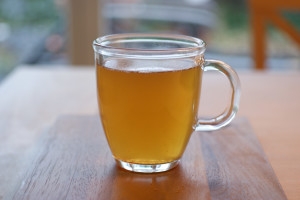So, what is the deal with bone broths? There has been a lot of talk about them recently – take a look here and here. Basically, drinking the broth created by boiling specific animal bones (with or without marrow, some attached meat, etc.) is said to be very beneficial to our skin, organs, adrenal glands, and much, much more. People are calling it the fountain of youth and “the new juicing”. Hmmm, even though this sounds kinda gross, let’s dig deeper, because I really like what juicing does for my body…
I consulted Bare Beauty’s resident naturopath, Dr. Sherri Jacobs. This is what she had to say: “For hundreds of years, people have been making broth from the bones and leftover parts of animals. When vinegar is added, the broth becomes medicinal as the acid releases minerals and proteins from within the bones and cartilage. This virtual liquid vitamin is especially beneficial for healing and nourishing the gastrointestinal tract.”
Ingredients
Bones—from poultry, beef, lamb, fish or shellfish
- cooked remnants of a previous meal, with or without skin and meat
- raw bones, with or without skin and meat (raw bones and meat may be browned first in the oven, or in the bottom of the stockpot to enhance flavor and color) ∗ use a whole carcass or just parts (good choices include feet, ribs, necks and knuckles)
Vegetables—peelings, ends, tops and skins or entire vegetables may be used
- celery, carrots, onions, garlic and parsley are most traditional, but any will do ∗ if added towards the end of cooking, mineral content will be higher
Vinegar—any type, (I like raw apple cider vinegar) 2 tablespoons per 1 quart water Water—cold, filtered water to cover
Combine all ingredients in a large stainless steel pot or pressure cooker. Bring to a boil and remove any scum that has risen to the top. Reduce heat, cover and simmer 6–24 hours (3-12 hours if using a pressure cooker). To reduce cooking time, smash or cut bones into small pieces before cooking. If desired, add vegetables in last half hour of cooking. Strain through a colander or sieve lined with cheesecloth for a clearer broth. If uncooked meat was used to start with, reserve the meat for soup or salads.
If you wish to remove the fat, use a gravy separator while the broth is warm or skim the fat off the top once refrigerated. Cold broth will gel when sufficient gelatin is present. Broth may be frozen for months or kept in the refrigerator for about 5 days.
Uses
∗ As a base for making soup.
∗ Use broth in place of water to cook grains or beans.
∗ Simply add salt and sip broth like tea. This is especially nice in the winter or if you’re feeling sick.
Adapted by Stephanie Maxson and Anne Buzzelli from Traditional Bone Broth in Modern Health and Disease by Allison Siebecker (The Townsend Letter, February/March 2005), and from Nourishing Traditions by Sally Fallon (New Trends, 1999).
Here is an awesome post about bone broths on Nourished Kitchen, too.
What do you think? Are you already a fan? Are you going to try it? Are you a vegan and totally opposed and offended?
…..
I’ve spent almost a decade immersed in the world of green beauty and nontoxic living. I want to help you find everything from a killer lipstick to a nontoxic laundry detergent, and beyond. Subscribe to a healthier lifestyle with me.

Thank you for subscribing!


